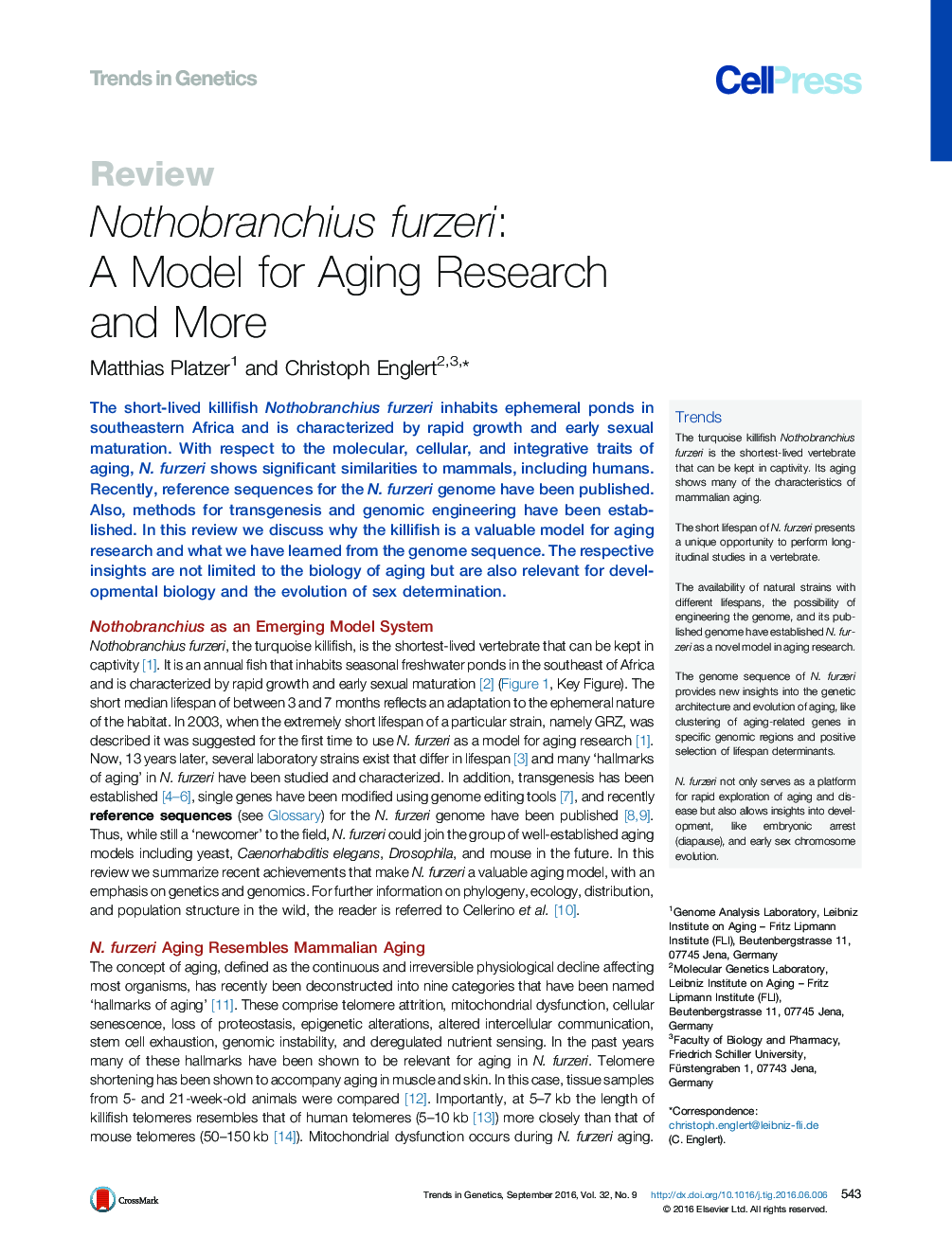| کد مقاله | کد نشریه | سال انتشار | مقاله انگلیسی | نسخه تمام متن |
|---|---|---|---|---|
| 2824582 | 1404953 | 2016 | 10 صفحه PDF | دانلود رایگان |

The short-lived killifish Nothobranchius furzeri inhabits ephemeral ponds in southeastern Africa and is characterized by rapid growth and early sexual maturation. With respect to the molecular, cellular, and integrative traits of aging, N. furzeri shows significant similarities to mammals, including humans. Recently, reference sequences for the N. furzeri genome have been published. Also, methods for transgenesis and genomic engineering have been established. In this review we discuss why the killifish is a valuable model for aging research and what we have learned from the genome sequence. The respective insights are not limited to the biology of aging but are also relevant for developmental biology and the evolution of sex determination.
TrendsThe turquoise killifish Nothobranchius furzeri is the shortest-lived vertebrate that can be kept in captivity. Its aging shows many of the characteristics of mammalian aging.The short lifespan of N. furzeri presents a unique opportunity to perform longitudinal studies in a vertebrate.The availability of natural strains with different lifespans, the possibility of engineering the genome, and its published genome have established N. furzeri as a novel model in aging research.The genome sequence of N. furzeri provides new insights into the genetic architecture and evolution of aging, like clustering of aging-related genes in specific genomic regions and positive selection of lifespan determinants.N. furzeri not only serves as a platform for rapid exploration of aging and disease but also allows insights into development, like embryonic arrest (diapause), and early sex chromosome evolution.
Journal: - Volume 32, Issue 9, September 2016, Pages 543–552